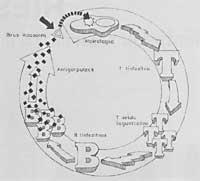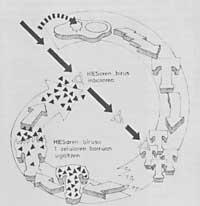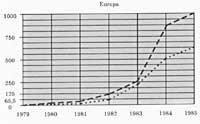AIDS in search of some light
AIDS or Acquired Immunodeficiency Syndrome. What is hidden under these four terrible letters? A new epidemic caused by the crazy and confused entanglement that today's society carries? Or the apocalyptic penalty sent to us from heaven? Or, as we have had occasion to hear at the last minute, is it a disease dispersed by CIA in the development programs of its bacteriological warfare? In recent months we have had the opportunity to read this type of news and comments, and to get bored of another more daring or indifferent. As in the Abestigint it is called "Summer Song", if the same was done with diseases, certainly the title would have been acquired by AIDS in 1985. Moreover, the well-known actor Rock Hudson, learned from the very moment that he died affected by this scourge and spread quickly throughout the media.

As already indicated, the information has focused on this topic. But it has not always been a proper and correct information. Around this problem, sensationalism and morbidity have been said and written nonsensical barbarities. That is why, as we said in the title of this work, in Samalda, I will try to find some light in that pile of information that has attacked us from all the communications and offer it to you, the reader.
Let's step by step. Let's start from the beginning. Analyze what the name means. As differentiating characteristics of AIDS or Acquired Immunity Sindorma, we will mention two:
- To be received, that is, born at any time in postnatal life. There are other immunodeficiencies we call CONGENITAL.
- Our immunity system, that is, the system our body has to protect itself from external attacks, is affected and does not work properly. As a result, the person suffers diseases that usually do not suffer and is practically unprotected from external attacks.
A little history
Normal immune system:
- When the virus enters a healthy body, it is discovered by macrophages.
- T lymphocytes reproduce in many types of cells.
- B cells proliferate and create antibodies that attack and kill the invading virus.
The first cases of this syndrome were described on June 5, 1981: 5 young, active homosexuals, were diagnosed with the bacterial juxtaposition Neumocystes carinii, but at the same time it was observed that they had other infections and that their immune system was inadequate.
In the following months, new cases appeared, not only in homosexuals, but also in young drug addicts, especially in heroinophanes), as well as in others not included in the previous two groups: hemophiliacs, Haitians, etc.
The disease appeared mainly in urban areas and its initial reproduction was enormous: 1200 cases until May 1983, 2259 until September 1983, some 8000 cases until the beginning of 1985, and according to the latest data published by the Basque Government things are: United States (30.iv-1985) 10. 000 cases, 1 across Europe. 226 cases (1985-VI-30), and in the Autonomous Community of the Basque Country, on September 25, 1985, 6 safe cases can be given, 4 in Gipuzkoa and 2 in Bizkaia.
As can be seen, although the figures are large, they are not so tragic. Let's think that any weekend more people die from car accidents, and let's not say the huge death rates from cancer, heart disease, alcoholism, etc.
Why is there so much sound, so much noise? What causes this important disease? What has the media and health organization moved on the one hand to achieve the dominance and prestige that this disease has acquired?
How does the disease arise?
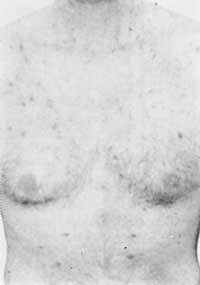
It seems that today it is clear that the cause of the disease is a virus called LAV (Lymphadenopaty-associated virus) or other HTLV-III (Humas T-lymphotropic virus type III). But the theories that have been given to explain the cause of the disease, both more curious and rare have been in recent months.
It was known that HTLV viruses had to do with certain human diseases (leukemias, lymphomas, etc.) Two groups of researchers, one working at the Pasteur Institute in Paris, and one working at the National Cancer Institute in the US, isolated a new virus in an AIDS patient and each group of researchers gave it its own name, the French LAV and the American HTLV III. It is currently considered a same virus, known as LAV/HTLV III. All subsequent tests have confirmed this virus as a creator of AIDS.
When this virus enters the body, it integrates into the host cell genome (called T lymphocyte, especially in cells), causing the destruction and decrease or decrease of these cells. Because these lymphocytes are the most responsible for our immune system, it is easy to understand that when they are reduced in number, the body is left unprotected or defensive against external attacks, so bacteria and fungi that normally do not harm humans, can cause great slaughter in people in this situation.
Risk groups
All studies conducted from the epidemiological point of view have yielded conclusions similar to the trend or passion of AIDS for certain collectives (heroinophanes, homosexuals, hemophiliacs mainly). Why is that?
It is attacked by the AIDS virus.
- The virus infects T auxiliary cells by blocking their ability to identify antigens and making them the actual factory of new viruses.
- Since T lymphocytes cannot carry out their anti-infectious action, any new invader (the so-called opportunistic microbe finds the free path and can cause death.
If we look at the transmission pathways of LAV/HTLV III, we can understand this distribution or special distribution of the disease. This virus is transmitted mainly by two ways: presence in fluids or liquids of other bodies (tears, txistu, cefaraquídeo liquid, etc.) does not show that the note is transmitted by these liquids or pathways.
The transmission routes are therefore two:
- Via venerea, h.d., through sexual relations, especially in homosexuals, and also in some bisexuals.
- Blood route. In this way it can be understood that donations of drug addicts increase (by the use of contaminated syringes), or that when contaminated blood is used in transfusions, they transmit the disease (special risk of hemophilic).
It must be said, however, that being homosexual, heroinophilic or hemophilic does not increase the risk of AIDS. In homosexuals, the main risk factor is promiscuity (the existence of multiple bedmates) that usually occurs. And in heroinophils or hemophiliacs, the lack of cleanliness for the former, or the use of contaminated blood for the latter, are the causes that increase the incidence of the disease.
The above-mentioned incidence statistics are void in countries such as Haiti or Africa. Why is that? In these countries there are also many heterosexual women and young people. Despite explaining this fact, two hypotheses have been formulated:
- With an animal (mosquito, fly, etc. ). ), acting animals as vectors, transmission of other agitation diseases.
- In these territories the virus was endemic, already existed and spread more quickly. In this way, the aforementioned pathways (venereo, blood) have been quantitatively modified.
Disease progression

As we have seen before, the LAV/HTLV III virus enters the body. And then what? It must be said that of those who have had contact with the virus, only a very small proportion will then make an AIDS, h.d. Of people who have antibodies to the virus, which are called seropositive, only some will get sick.
Once the virus has reached the body there is an incubation period, without any symptoms, of 9 to 22 months (which at other times can be longer until reaching 5 years).
The next step, which as indicated above only occurs in a small proportion of hiv-positive people, is the appearance of symptoms or signs of AIDS disease. Many of these signs are common, even in other milder or normal diseases. Therefore, these signs should not necessarily raise the suspicion of how AIDS is.
- High fever, which is maintained for months and appears without clear reasons. Loss of appetite and weight State of discomfort that feels throughout the body. Nonspecific symptoms of the respiratory system. Adenopathies (swollen lymph nodes) spread throughout the body. Periodic casualties.
- Blue-sails, moratons, in the mouth or on the skin, long lasting.
These general signs are accompanied by diseases directly related to the immunodeficiency situation: 90% Kaposi sarcoma and/or bathrobe due to Neumocystes Carinii.
These two diseases usually do not occur in people with favorable age and status. However, the incidence of AIDS has increased considerably.
What we can do about the disease
Solve the person's doubts first. And one of the most appropriate ways to do this is to ensure the diagnosis, since, as already mentioned, there are many that, despite having antivirus antibodies, will never take the disease.
The main diagnostic criteria are clinicians, the appearance of opportunistic infections or infections (which are not usually given), and the appearance of Kaposi sarcoma in people who, without a clear cause, should not have decreased immunity (e.g., young people or adults). Laboratory tests are limited to measuring levels of T lymphocytes and checking for antibodies in the blood.
Would I also like to talk about prevention or what can be done not to get the disease? As seen above, prevention should focus primarily on risk groups:
- Avoid sexual transmission. Bed mates, who change as little as possible in homosexuals and are always the same, about 3-4 and not more. In this sense, during the last season a change of habits in homosexual environments has been observed, motivated by fear of AIDS. They do not transmit contaminated blood. However, this form of prevention does not justify the fear of donation and, above all, the people who receive it. In recent months all blood transfusions are subjected to the special ELISA antibody screening test, and from now on we can relax.
- Injection, syringe, etc. Cleanliness and hygiene are essential. Syringes, for example, should be used only once, otherwise there is a risk of transmission of the disease through blood pollution.
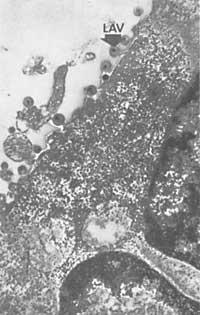
Finally, we have to talk about treatment. Today it is quite poor. and we are not able to provide great expectations. Many types of treatments have been treated, some of which have generated false expectations in some cases (remember cyclosporine, so mentioned in recent months), but at the moment no adequate remedy has been found for this disease.
Finding a possible vaccine has also meant a lot of money and work. This virus, LAV/HTLV III, is a virus that easily supports mutations, so the difficulties and difficulties to get an adequate and effective vaccine have not yet been overcome.
However, we would not like to end in such a pessimistic and desperate way. Today, information has spread widely and ordinary people know some ways or possible behaviors in this situation. As we move forward, it is not foolish to think that adequate treatment and an effective AIDS vaccine will be found. (short-term).
Buletina
Bidali zure helbide elektronikoa eta jaso asteroko buletina zure sarrera-ontzian




